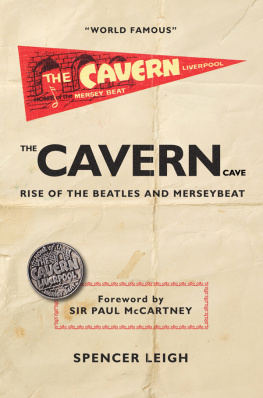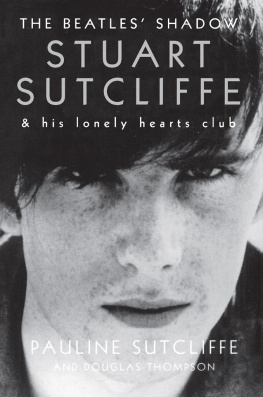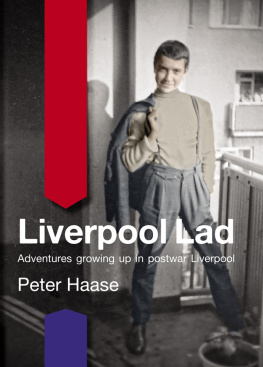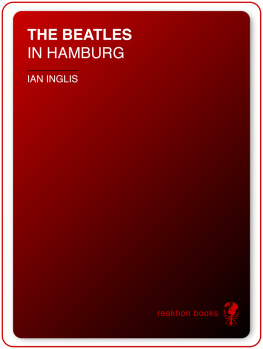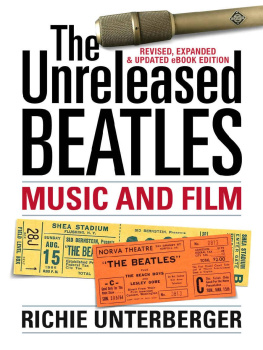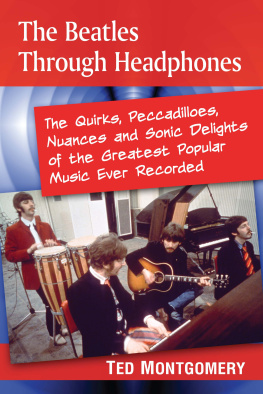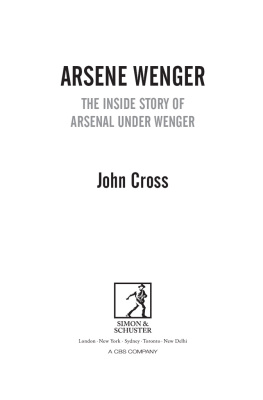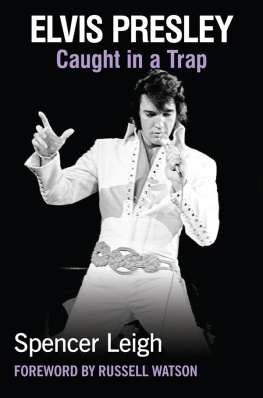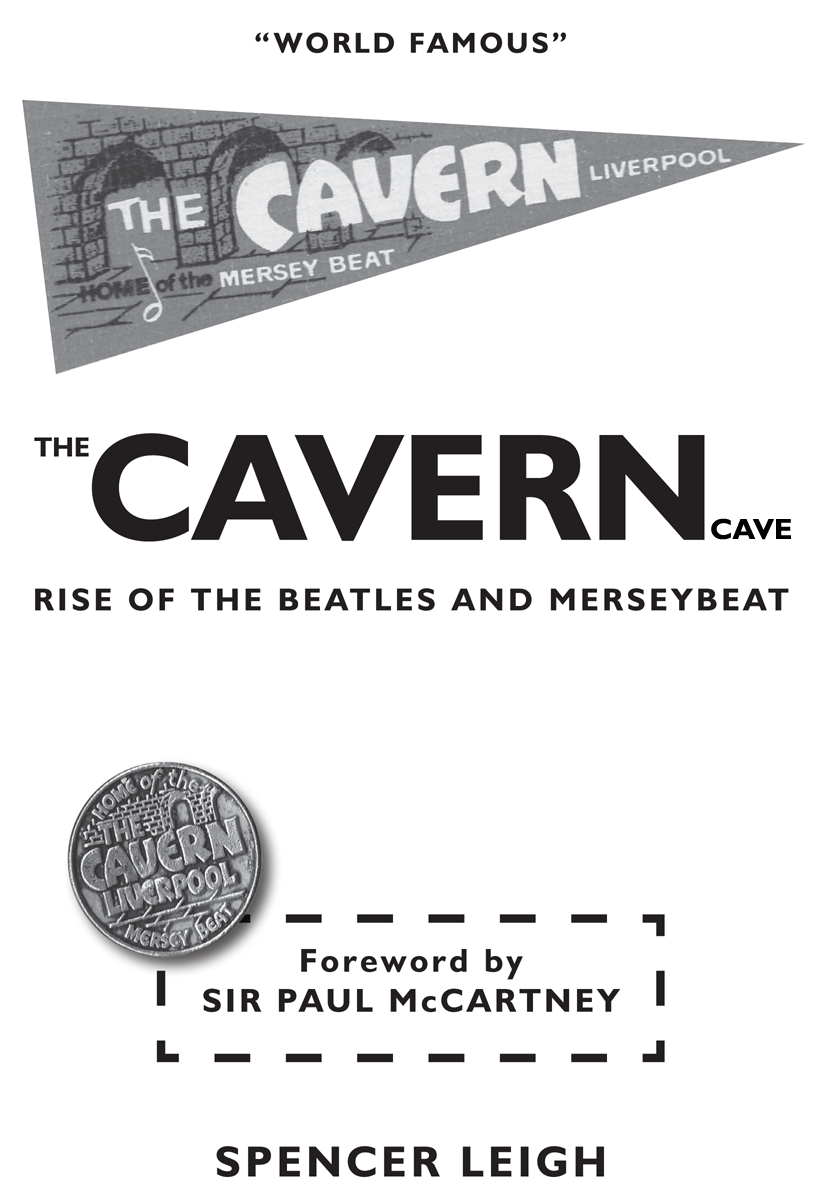
ACKNOWLEDGMENTS
My thanks to everybody who has spoken to me for this book, and, indeed, earlier, related projects. I have tried not to plagiarise myself too much and although I have drawn on previous books, notably Lets Go Down The Cavern (1984), a biography of Bob Wooler, The Best Of Fellas (2002) and Twist And Shout! (2004), most of the text is new. The interviews that I have been conducting on and off since 2005 were both for this book and for a BBC Radio Merseyside series, called Soup & Sweat & Rock & Roll, an eight-hour series broadcast in 2007.
Phil Thompsons book, The Best Of Cellars (Bluecoat Press, 1994 and Tempus Publishing, 2007), has been an invaluable source, particularly as it provides day-to-day listings for the Cavern from 1957 to 1973. However, as Thompson admits, the list was comprised solely from what was advertised in the Liverpool Echo. This was important research but the Echo often omitted lunchtime sessions and some of the stated attractions were overtaken by events. At first, I anticipated publishing a complete list from 1957 to the present, but in the end I decided that it would take up too much space and would get in the way of the story. Also, lists can be lifeless reading, especially the heavy rock nights of the early 70s where a small group of bands appeared over and over. In the end, I have been selective in the events I have listed, although all the significant dates are there. The dates sometimes differ from Phil Thompsons book because I have also used Mersey Beat newspapers and other sources, sometimes a musicians diary. I have believed everyone who has told me that they were there on particular nights unless I have been able to prove otherwise. For example, the early 60s pop singer Dave Sampson told me that when he played the Cavern for his first and only time in August 1960, a young George Harrison wanted to inspect his lead guitarists Fender Jazzmaster. As George was at the Indra in Hamburg that night, it must have been a different Liverpool musician or it took place at another venue. The most likely explanation is that it was Colin Manley, the ace guitarist from the Remo Four.
Another valuable source has been Mark Lewisohns The Beatles Live! (Pavilion Books, 1986) as well as his later publications. His ground-breaking work contains brilliantly researched background on the Beatles gigs at the Cavern, although even now in 2007, Mark admits that the listing may still not be definitive. Mark is working on the first volume of an extremely comprehensive Beatles biography and at times, it has felt like we have established a detective agency as we sought to find some significant person or establish particular facts. There is no better way to start the day than with an email from Mark as it will always contain some witty remark. (Since I wrote this, Marks utterly brilliant All These Years; Volume 1 Tune In has been published. I would recommend the full 1,700 page double-volume edition but it will take you at least a fortnight to read it.)
My thanks to everybody at the Cavern, especially Bill Heckle, Dave Jones, George Guinness, Julia Baird and Ray Johnson, and the clubs consultant for special projects, Bob Young, a man who is so perpetually up that you cant imagine him writing Down Down. Thanks also to Billy Butler, David Charters, Frankie Connor, James Cullinan, Geoffrey Davis, Colin Disley, Peter Grant, Jonathan Hallewell, Bill Harry, Anne Leigh, Mick Ord, Ray OBrien (the author of There Are Places Ill Remember, a guide to the Beatles early venues) and Mick OToole.
It is good to be able to quote from Johnny Guitars diaries: what a shame that he never completed (maybe, never even started) his memoirs before he died. I have also seen the diaries of Ray McFall, Ron McKay and Ritchie Galvin, which provide useful, first-hand information. For many years, I had been hoping that some public body would purchase Bob Woolers archives, but this didnt happen and the files have been spilt up and sold.
Contents
FOREWORD
Sir Paul McCartney
The Cavern do I have memories of the Cavern? Do I? Oh yeah. My first memories were of us trying to get booked there, but in the early days the Cavern only booked jazz and blues artists and frowned upon upstart rocknrollers like ourselves. We fibbed about our repertoire and managed to get a date there, where we proceeded to announce songs like Long Tall Sally as being written by Blind Lemon Jefferson and Blue Suede Shoes, the famous creation of the legendary blues artist Leadbelly! When the owners of the Cavern realised what we were doing, they sent up little notes to the stage complaining but by then it was too late and we had managed to infiltrate.
We were so persistent that we eventually managed to get some follow-up dates and soon became regulars at the sweaty little cellar below Mathew Street; and sweaty it was sometimes the condensation on the ceiling from the people crowded in there would drip onto our equipment, causing the amps to fuse and the power to go off. We then improvised, singing a cappella, anything we could think of that the audience would be able to join in with. We came to know regulars like Bob Wooler, the great DJ, Paddy Delaney, the legendary bouncer and Ray McFall, the enthusiastic owner.
My second, and worst, memories was arriving at the Cavern for one of the famous lunchtime sessions and realising I had forgotten my Hofner bass and as I was left-handed (and still am!) nobody could lend me one, so I quickly drove half an hour to my house, picked up the bass but arrived back in time for the end of the Beatles set, having been replaced by a bass player from one of the other groups (I seem to remember it was Johnny Gustafson of the Big Three). Was I gutted? Oh yeah!
It was the breeding ground for what would become the Beatles early repertoire, and I will always think of the place with great affection for the days spent with my pals in its sweaty, damp atmosphere with the audience chewing on cheese rolls, swigging Coca-Cola and sending up bits of paper to the stage with requests for songs such as Shop Around and Searchin to be played for crowd members calling themselves things like The Cement Mixers and so on.
I could go on but I wont. They were happy days, so many congratulations, Cavern, on this anniversary.
FROM ME TO YOU: AN INTRODUCTION
Many clubs have played a significant part in shaping popular music Birdland and CBGBs in New York; Whisky-A-Go-Go in Los Angeles; Ronnie Scotts, the Marquee, the 100 Club in London; the Armadillo in Austin, Texas; Tipitinas in New Orleans; Tootsies in Nashville but none of them are as well-known or as influential as the Cavern. Without any fear of contradiction, I can say that the Cavern is the most famous club in the world and a letter simply addressed to The Cavern, Liverpool will reach its destination.
This is the story of the Cavern. It is a new edition of a book I wrote in 2008, The Cavern: The Most Famous Club in the World. The majority of the text is in diary form and gives you a feel of what was happening day-to-day at the Cavern. The tale is told chronologically from its opening in January 1957 to the present day, updated from 2008 to 2015. The names of the speakers are printed in bold type and come from my own interviews with musicians, fans and Cavern staff. I have matched the anecdotes and opinions with the dates, but sometimes this has to be on a best guess basis. There are notes on the contributors at the back of the book.
Next page
